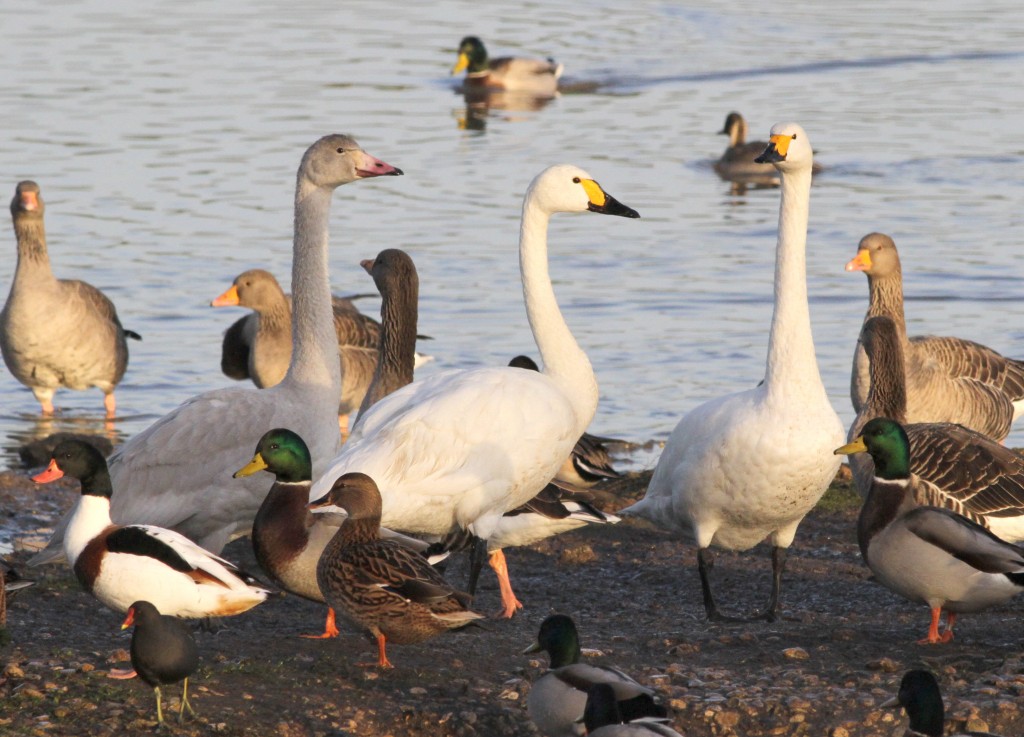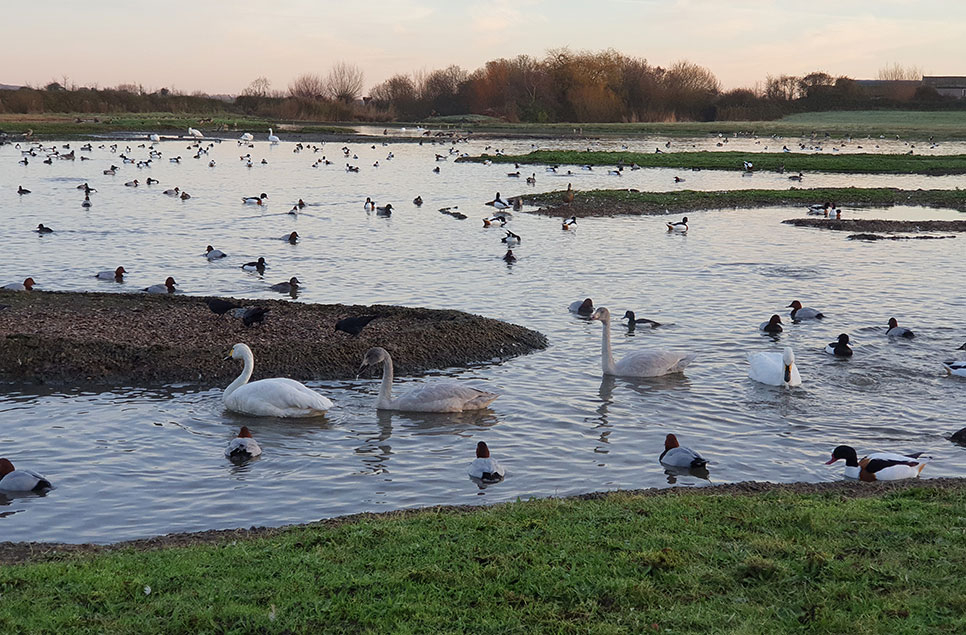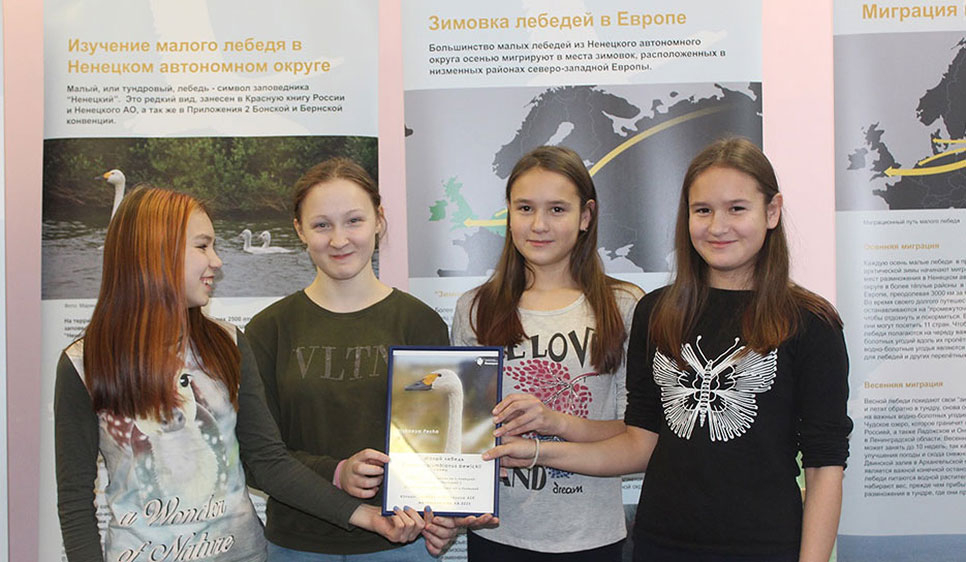Dario's family rule the roost!
As the winter progresses and more swans arrive at Slimbridge, a pecking order is developing as the fight to become the most dominant bird on the lake unfolds. We are now greeted every morning by dramatic displays of honking, frantic wing flapping and neck stretching which sometimes culminates in a physical grapple.
These behaviours are simply intended to intimidate and scare away competitors - and they certainly work! What can start off as a casual peck may quickly escalate into a full blown shouting match, often attracting other bystanders from various parts of the lake. Contests between closely matched groups are more likely to escalate as they each weigh up each other’s fighting ability. It’s not uncommon to see several pairs fighting together at any one time.
We can measure dominance ranks of the social units (e.g singletons, pairs or family groups) by recording the outcome of aggressive encounters between known individuals. We can record this information quickly thanks to the bill pattern identification techniques that we use which allow instant recognition of individual birds.

Currently at the top of this pecking order is Slimbridge regular Dario with his mate Bridges and their two young cygnets. Their top ranking is currently allowing them to dominate the very best feeding spot on the lake - which luckily for visitors, also happens to be in front of the Peng Observatory! - at the daily 4pm feed. Our previous studies have found that families tend to be the most imposing and dominant social group, winning more than 70% of their encounters and this dominance increases with the number of cygnets. The singletons and yearlings are usually sub-ordinate and skirt around the larger groups.
There is a lot at stake and both costs and benefits associated with reaching the upper echelons of the social hierarchy. As you can imagine, maintaining a dominant position is physically demanding but allows access to prime feeding and roost sites. WWT’s studies have found that females are able to feed for longer periods when their dominance rank is higher. Females with mates have also been found to be in better body condition than their singleton counterparts, and are thus likely to benefit from the presence of a mate, perhaps due to the male’s ability to defend feeding areas. Furthermore, those females leaving Slimbridge on spring migration in good body condition are more likely to return the following year with cygnets. The male partners may feel the costs of this protective role and have reduced body condition.
The pecking order is very dynamic and may change during the winter with new (and perhaps more dominant) arrivals and so it remains to be seen whether Dario and his family will remain Top Swans for long.......


